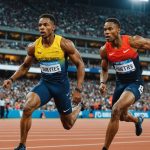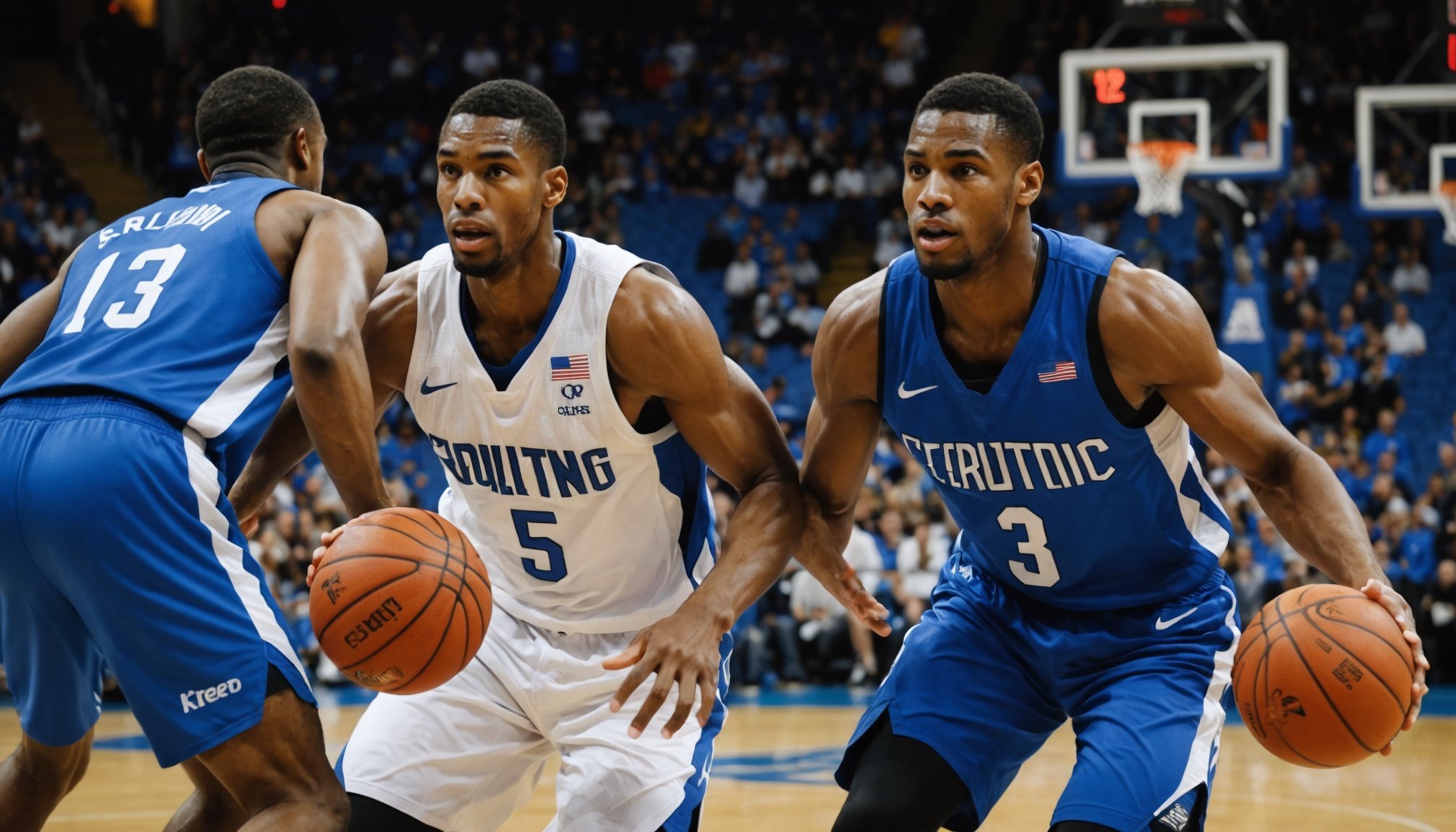Importance of Hydration for Athletes
Maintaining optimal hydration is crucial for athletes seeking peak athletic performance. Hydration benefits extend beyond simple thirst quenching; they play a pivotal role in both physical performance and recovery. Dehydration can significantly impair an athlete’s capabilities, especially in high-energy sports like UK basketball.
Dehydration affects muscular endurance, strength, and cognitive function. Studies have shown that as little as 2% body mass loss due to fluid depletion can lead to noticeable reductions in performance. For basketball players, this can mean slower reaction times, diminished shooting accuracy, and quicker onset of fatigue.
Also to discover : Elevating On-Court Leadership: Strategies for UK Basketball Point Guards to Enhance Communication Skills
The consequences of poor hydration levels during athletic activities can be severe. It increases the risk of heat-related illnesses, cramps, and can lengthen recovery times post-exercise. Proper hydration ensures muscles receive the oxygen and nutrients needed to function efficiently, directly impacting performance levels during games or training sessions.
To enhance athletic performance and reduce recovery time, basketball players should monitor their fluid intake closely. By doing so, they can maintain a competitive edge, reduce injury risks, and increase their endurance on the court. Hydration isn’t just a basic need; it’s an integral part of an athlete’s toolkit for success.
Topic to read : Top Dietary Strategies for UK Basketball Forwards to Boost Muscle Mass Effectively
Hydration Strategies for UK Basketball Players
Hydration is crucial for basketball players, especially considering the UK’s specific climate and basketball season demands. The often cooler and more humid weather can deceive athletes into thinking they need less fluid intake, but maintaining adequate hydration is just as vital here.
For effective hydration strategies, players should consider the particular demands of different stages of the basketball season. During intense training and competitive months, athletes need to increase their fluid intake to compensate for the rigorous activity and ensure optimal performance. Monitoring hydration status becomes even more essential in these periods.
A practical approach involves assessing hydration levels before, during, and after games. Using methods like checking urine color or employing digital hydration monitors can offer quick insights into an athlete’s fluid balance. Precise adjustments can then be made according to individual needs.
Strategically, players might start hydrating hours before a game and continue with small, consistent water sips during breaks. Post-game, it’s crucial to replenish lost fluids to aid recovery and prevent dehydration. Each of these steps ensures players remain hydrated, energised, and ready to give their best performance throughout the basketball season.
Pre-Game Hydration Tips
Maximizing athletic performance begins with pre-game hydration, and timing is essential. Understanding the recommended fluid intake before a game is crucial for optimal results. It’s generally advised to start hydrating well before competition—aim to drink about 500-600ml of fluid two to three hours prior. This gives your body time to absorb the fluids effectively.
Selecting the right types of fluids is vital for performance enhancement. While water is indispensable, incorporating beverages with electrolytes can provide additional benefits. Drinks like sports beverages or coconut water can help maintain electrolyte balance, which is critical when sweating significantly.
Hydration timing is key. Drinking too much too quickly, especially right before intense physical activity, can lead to discomfort or bloating. Consuming an additional 250-300ml of your chosen fluid 20-30 minutes before game time can ensure you’re appropriately hydrated without the risk of feeling sluggish.
A consistent focus on maintaining hydration in the days leading up to a game sets the foundation for effective pre-game hydration. Establishing a routine tailored to your personal needs can significantly boost your athletic performance on game day.
In-Game Hydration Techniques
To maintain peak performance during high-intensity play, understanding proper in-game hydration techniques is crucial. Hydration isn’t just about drinking water; it’s about timing, quantity, and maintaining an adequate balance of electrolytes. Let’s dive into the best practices.
Fluid intake during games should be deliberate and targeted. It’s recommended to consume small amounts of liquids often, rather than large quantities all at once. This helps in maintaining consistent hydration levels and prevents discomfort from overconsumption. Aim for fluids that offer a balance of water and electrolytes, such as sports drinks, which are specifically formulated to replenish both fluids and the essential salts lost through sweat.
Hydration breaks are critical during matches and should be strategically scheduled. They provide an opportunity for players to recover, allowing them to maintain intensity and focus. Effectively timed breaks not only refresh the body but also offer a moment for mental regrouping.
Understanding these techniques helps optimize performance. Remember, staying well-hydrated is not just a physical necessity; it also augments cognitive function, enabling athletes to maintain high-level decision-making under pressure.
Post-Game Hydration Recovery
Athletic endeavours can be taxing on the body, making effective hydration strategies crucial for optimal post-game recovery. Immediate hydration replenishment is essential to replace the fluids lost through sweat. Consuming water alongside electrolytes, such as sodium and potassium, supports better fluid retention and muscle function.
Recovery drinks often play a significant role in bridging the gap between water and nutrient needs. Sports drinks containing balanced electrolytes and carbohydrates can enhance athletic recovery by restoring glycogen levels. Milk-based drinks also provide a good source of protein, aiding in muscle repair and growth while replenishing hydration.
A key aspect of successful recovery is regular monitoring of hydration levels. Athletes can use tests such as urine colour checks or specific gravity measures to ensure they maintain appropriate hydration. Technology-savvy devices, like smart hydration monitors, offer precise insights into personal fluid needs based on exertion levels.
Incorporating these hydration strategies post-game not only aids in recovery but enhances overall athletic performance. By understanding their body’s specific hydration needs, athletes can make informed decisions to maintain peak condition.
Tailoring Hydration to Individual Needs
Understanding one’s personal hydration strategies is vital in ensuring optimal health and performance. Each individual’s hydration requirements vary significantly based on factors such as body type and exertion level. For instance, athletes may require more fluid intake to compensate for sweat loss during high-intensity activities, while others might have different needs due to body composition.
Hydration monitoring tools can be incredibly helpful in assessing these needs. Apps and wearable devices track fluid intake and output, providing insights into hydration levels. These tools aim to improve performance outcomes by offering data-driven suggestions, making it easier for individuals to adjust their consumption habits accordingly.
It’s crucial to adjust hydration techniques to suit individual needs and preferences. Some individuals might prefer drinking water, while others may benefit from electrolyte-rich beverages, especially if they experience high electrolyte loss. Personal preferences in terms of taste, convenience, and availability can significantly influence hydration choices. Adapting these choices ensures that hydration remains effective and pleasant, ultimately supporting overall well-being. Understanding and applying these principles can lead to better health outcomes and more effective physical performance for everyone.
Visual Aids and Further Resources
To better understand and implement effective hydration strategies, utilizing visual aids such as hydration infographics can be incredibly beneficial. These infographics simplify complex information, illustrating ideal water consumption levels and how hydration impacts performance optimization. They serve as quick reference tools for individuals striving to meet their hydration needs.
For those who seek to delve deeper into the science of hydration, exploring various educational resources is advisable. There are numerous recommended readings and scientific studies that investigate the correlation between hydration levels and athletic performance. These documents provide extensive data and insights, which support the importance of maintaining optimal hydration.
Coaches and athletes looking to enhance their understanding of hydration can benefit from these varied resources. For ongoing education, certain platforms offer a comprehensive collection of multimedia materials tailored to support hydration initiatives. Some resources include:
- Scientific journals discussing the latest research on hydration and health
- Online courses focusing on nutrition and hydration for athletes
- Expert-led webinars addressing performance optimization through proper hydration
Incorporating these resources into coaching and training can empower athletes to maintain peak performance while safeguarding their health through adequate hydration practices.






